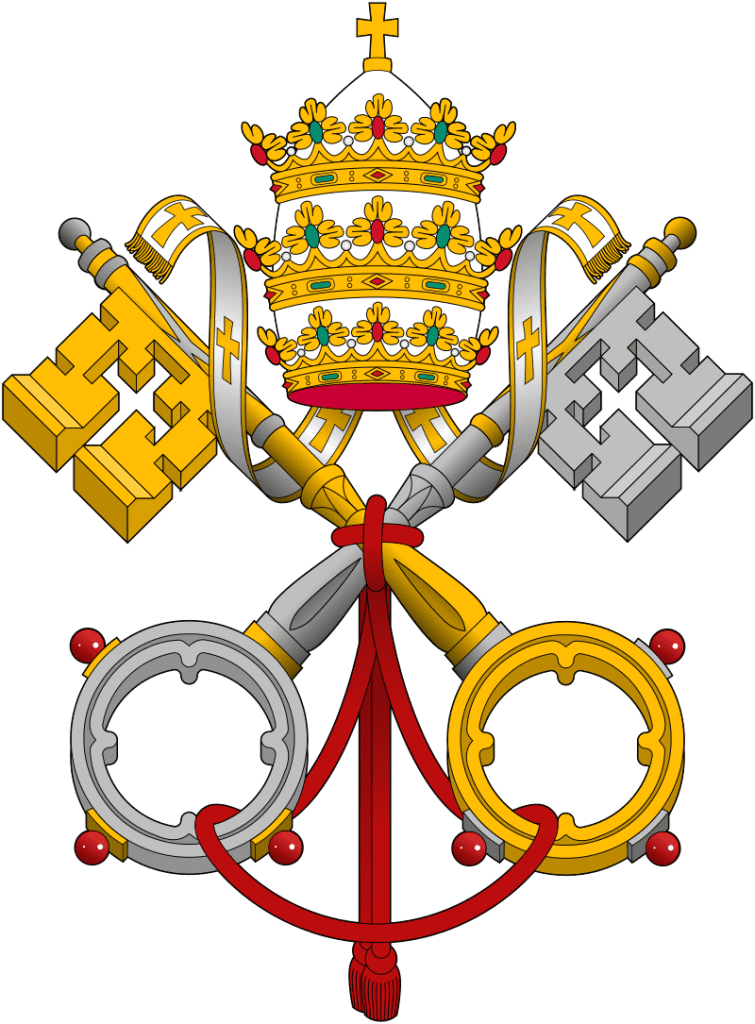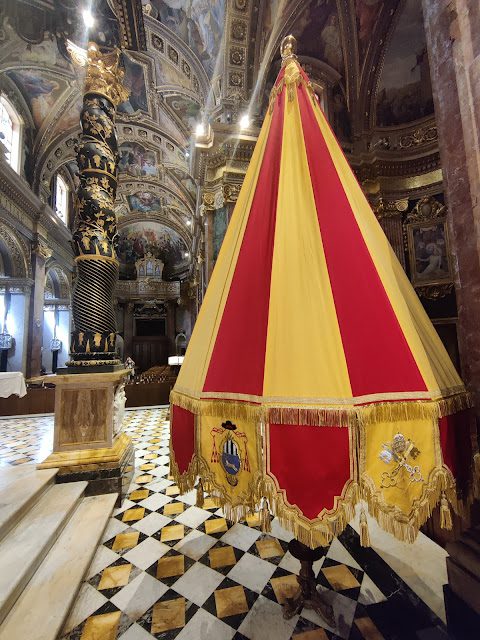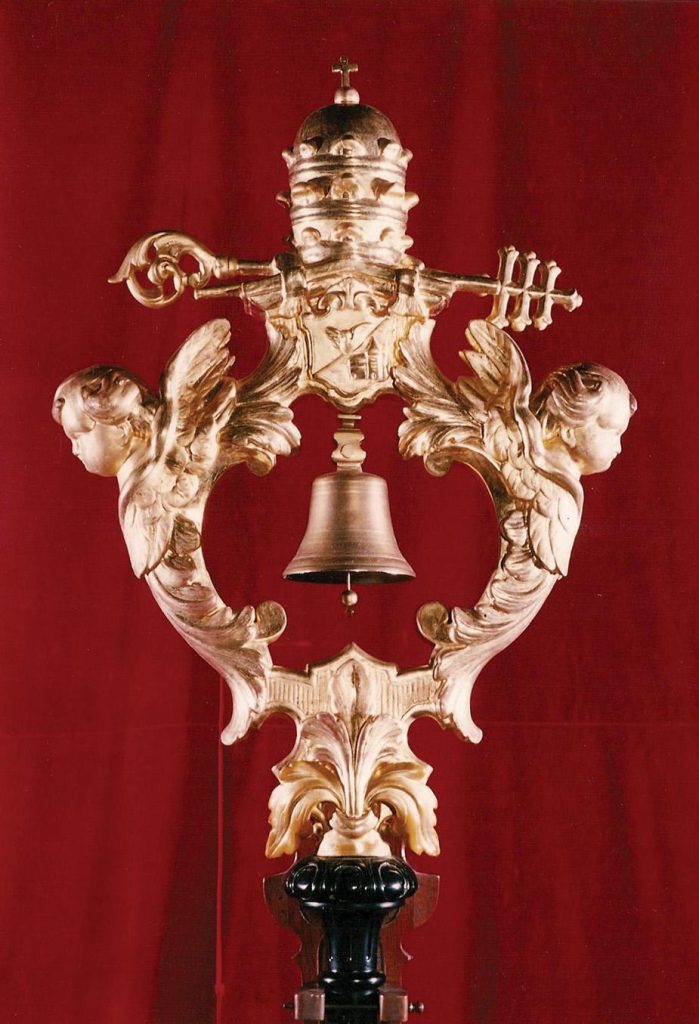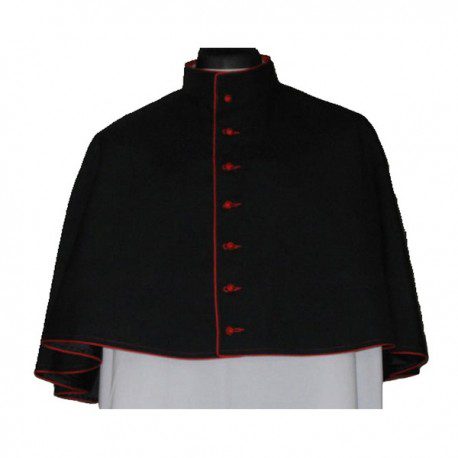Traditionally, there are four symbols that indicate a church is a basilica. Three of them involve the church building itself and one involves the rector. The rector is the priest that holds the office of presiding over an ecclesiastical institution, in this case, the basilica.

The papal symbol, known as the Keys of Heaven or Saint Peter’s Keys is permitted to be displayed on the basilica itself, on sacred furnishings, and on the seal of the basilica. The “crossed keys” are a reminder of what our Lord promised to Peter and his successors: “I will give you the keys to the kingdom of heaven. Whatever you bind on earth shall be bound in heaven, and whatever you loose on earth shall be loosed in heaven.” (Matthew 16:19). The presence of the keys and the papal tiara are a visible sign of the continuous relationship of the basilica to the Supreme Pontiff.

**The umbraculum or ombrellino is an umbrella, which in times past was used on a daily basis to provide shade for the pope when outside. In modern usage, the umbraculum is a symbol of the authority of the Pope. The umbraculum, made in the traditional papal colors of red and yellow, is placed in basilicas on the right side of the altar. Major basilicas have an umbraculum made of red and gold velvet; minor basilicas have an umbraculum made of red and yellow silk. Once placed in its rightful place in the sanctuary, it remains partially opened ready to welcome the Holy Father. Whenever the Pope visits a basilica, the umbraculum is opened in his honor. Each basilica has different symbols embroidered upon it. Such symbols are the shield of the basilica itself, the shield of the Pope who raised the church to a basilica, the shield of the diocese, and possibly the shield of the country in which the basilica resides.

**The tintinnabulum, which means “little bell,” is another symbol of a basilica. It consists of a gold bell mounted on a pole. On the pole are placed the papal symbol of the tiara and crossed keys. In the Middle Ages and the Renaissance, the tintinnabulum was carried in processions to alert the people of Rome of the approach of the Pope. Whenever the Holy Father visits a basilica, the tintinnabulum would lead the procession into the basilica. Each tintinnabulum is specific to the basilica in which it resides.

The final indication of a basilica is that of a mozzetta. The mozzetta is a short cape that covers the shoulders and is buttoned over the breast. It usually goes to elbow length. In ecclesiastical dress, it is normally worn by the pope, cardinals, bishops, abbots, and other dignitaries. The color of it denotes the office: white for the pope, scarlet for cardinals, amaranth red (fuschia) for bishops, and black for abbots. In recognition of his link to the Holy Father, the rector of a basilica may choose to wear a black mozzetta with red piping, buttons, and button holes. It would be worn over the cassock or religious habit and the surplice when he is exercising the duties of his office.
**In the 1989 document Domus Ecclesiae (Norms for the Granting of the Title of Minor Basilica) from the Congregations for Divine Worship and Discipline of the Sacraments, the umbraculum and tintinnabulum are no longer required to be displayed in basilicas. Our Lady of Consolation, though granted the title prior to 1989, does not have either of these symbols.
